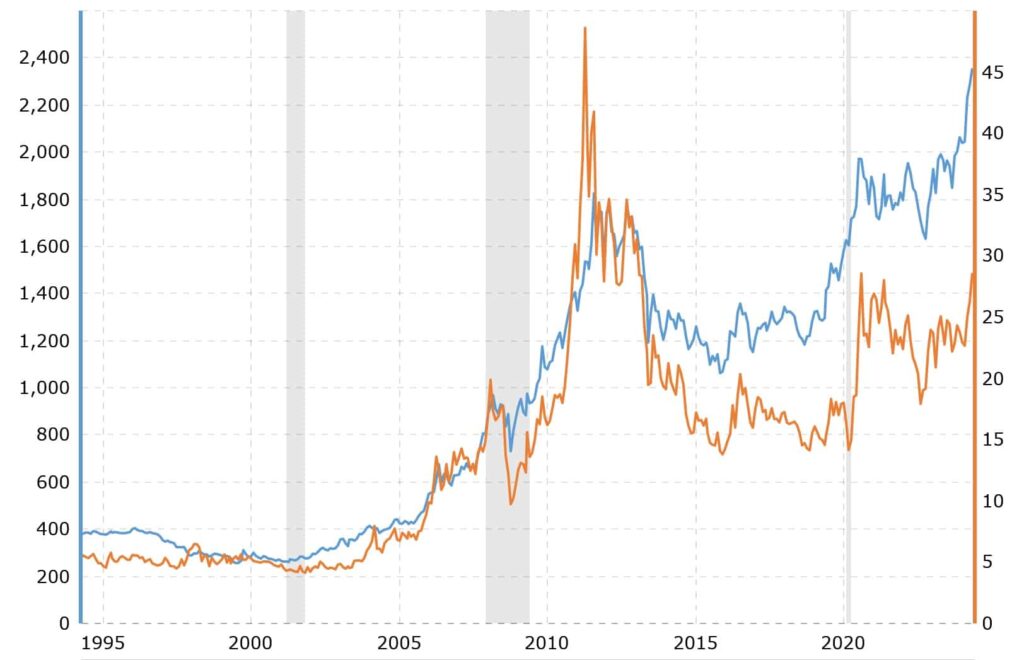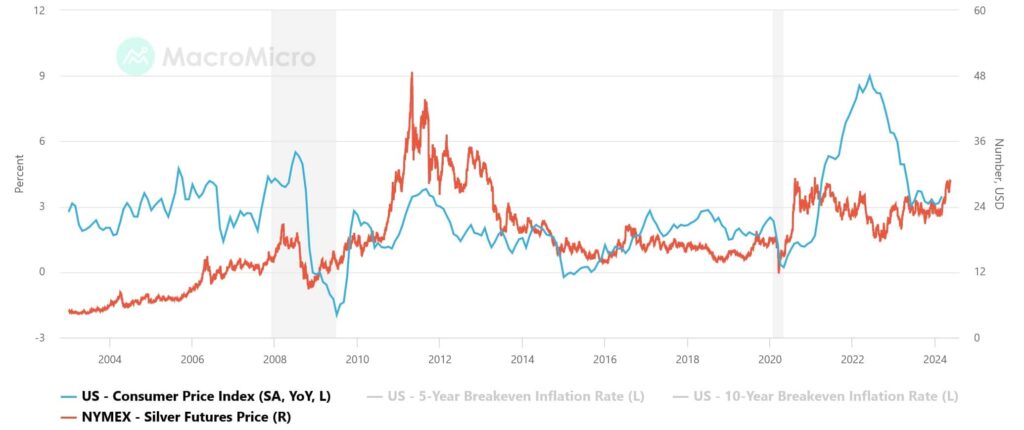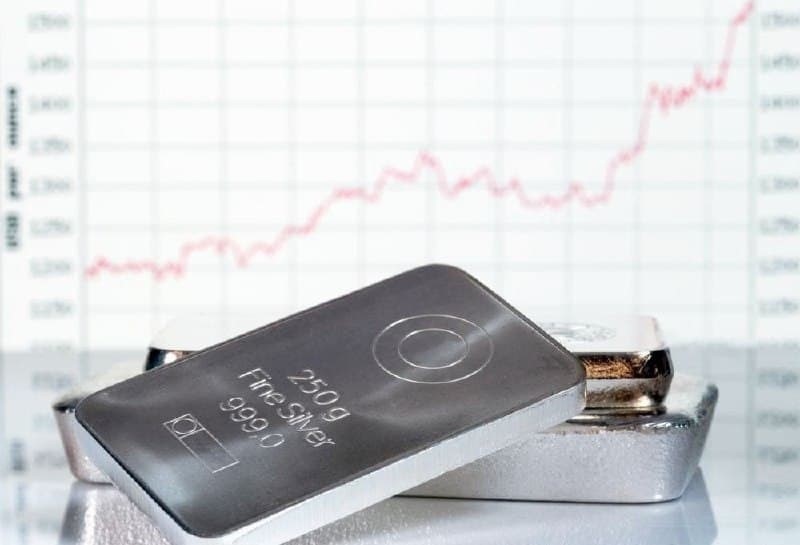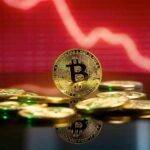From Ancient Greece to the late 19th century, silver was the unit of value, and the silver standard was used in virtually every major economy. As a currency, it was used to store value for far longer than gold. Today, we use fiat currencies that are no longer tied to precious metals, but does silver still have the quality to carry value when the economy hits the rocks? In other words, is silver a hedge against inflation?
Silver price in 2024
Far less valuable than gold, which has a spot price of about $2,350 per ounce, silver is trading for $28.55 per ounce as of May 14, 2024. That said, its price has spiked 19.28% since the beginning of the year. It peaked at $29.80 on April 12, 2024, and bottomed at $20.69 on October 2, 2023.
Curiously enough, the dates roughly correspond to gold’s high and low in the last couple of months, which were April 19, 2024 ($2,392) and October 4, 2023 ($1,821). Does that mean that silver and gold follow the same price trajectories?
Silver vs gold price
While their prices tend to follow the same trajectories, there are periods of exception, and the price of silver is much more volatile.

Gold is among the most frequently traded commodities globally today. Primarily, the jewelry industry drives its demand, but gold is also commonly used as a hedge against inflation, as it follows market rules different from those of stocks or bonds.
Investors often perceive silver as a precious metal that behaves similarly to gold when it comes to inflation. However, unlike gold, silver’s primary demand is in industrial applications, from electronics and solar panels to electric cars and chemical catalysts. This alone puts silver on a different trajectory than gold as it makes it vulnerable to economic cycles.
Silver’s volatility
Besides the demand in industry, silver’s volatility is heightened by its small market size compared to gold. Therefore, a dollar invested in silver has much more impact than a dollar invested in gold, causing broader price movements.
Furthermore, silver is almost universally gained as a byproduct of mining gold, as the metals are usually found together in a homogenous alloy called electrum.
Silver vs inflation: Historical data
Due to the combination of primarily industrial demand (rather than inflation hedge), a smaller market, and its presence in nature being tied to other metals like gold, copper, and zinc, silver’s price is much more volatile than gold’s.
Furthermore, an efficient hedge against inflation would track changes in the consumer price index. Still, silver has shown quite an erratic pattern that does not correspond to the effects of inflation on general prices.

Is gold or silver a better investment?
Due to gold’s limited use outside inflation hedge and value storage, it has been avoided by value-oriented investors like Warren Buffett, who famously quipped in his annual shareholder letter:
A century from now the 400 million acres of farmland will have produced staggering amounts of corn, wheat, cotton, and other crops – and will continue to produce that valuable bounty, whatever the currency may be. Exxon Mobil will probably have delivered trillions of dollars in dividends to its owners and will also hold assets worth many more trillions (and, remember, you get 16 Exxons). The 170,000 tons of gold will be unchanged in size and still incapable of producing anything. You can fondle the cube, but it will not respond.
– Warren Buffett in his 2011 letter to shareholders
How well does silver keep up with inflation – the bottom line
While precious metals uphold a reputation as a hedge against inflation, gold and silver do not follow exactly the same price patterns. In fact, gold is a better hedge against inflation since it is much less influenced by the traditional demand in industrial applications.
That said, even gold’s track record as a hedge against inflation is not as great as it might seem. In fact, there have been periods in recent history with exceptionally high inflation when gold surprisingly gave negative returns.
As such, the investing public placing their money on silver and gold should keep their portfolio ratio below 10%. Also, consider the investment as an emergency inflatable boat if the economy sinks rather than a way to earn money.
Somewhat counterintuitively, the stocks in the S&P 500 index remain the safest hedge against inflation on longer timelines.

Silver’s capabilities to counter inflation are lower than gold’s and, well, pretty unstable. Use silver as a hedge against inflation at your own risk.
Disclaimer: The content on this site should not be considered investment advice. Investing is speculative. When investing, your capital is at risk.





